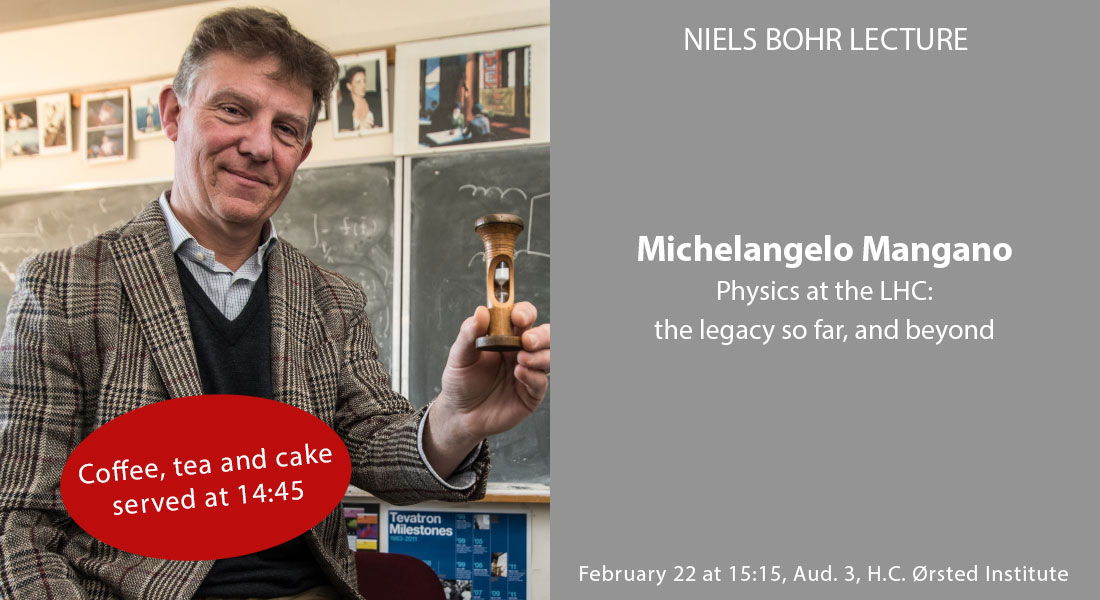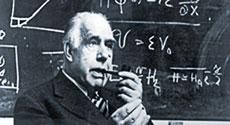Niels Bohr Lecture by Michelangelo Mangano, CERN

Title: Physics at the LHC: the legacy so far, and beyond
Abstract:
Particle physics is engaged in a worldwide effort to deepen our understanding of key issues, from the origin of dark matter and neutrino masses, to the dynamics of electroweak symmetry breaking and of non-perturbative strong interactions.
- A diverse collection of facilities and experiments, in the laboratory, in the sky and underground, in addition to theoretical work, are mobilized in these efforts. In this framework, collider experiments play a special role.
- The results of the Large Hadron Collider so far allow us to further optimize the exploration of the landscape unveiled by the discovery of the Higgs, and by the continued resilience of the Standard Model.
- Precision is emerging as a new theme, bringing new theoretical and experimental challenges, and providing unanticipated discovery opportunities.
The searches for phenomena beyond the Standard Model are also acquiring a new intrinsic value, as they contribute to consolidate the robustness of the theory and the accuracy of its modeling.
The talk will present the vision for the future of the Large Hadron Collider and of a next generation of colliders
About the speaker
Michelangelo Mangano is a senior physicist in the Theoretical Physics Group of CERN.
He graduated from Scuola Normale Superiore, PISA (Italy), and, before CERN, he held research positions in the Theory Department of Princeton University (NJ), Fermi National Accelerator Laboratory (FNAL, Batavia, IL), and Istituto Nazionale di Fisica Nucleare (Pisa).
- He has been visiting scholar and lecturer in major institutions worldwide. His theoretical activity focuses on the physics of high energy particle collisions, where he developed calculations used by the experiments to interpret their findings.
- He is interested in the search of new particles and, as a member of the CDF experiment at FNAL in the years 1988-2001, he directly contributed to the discovery of the top quark in 1994.
- He is also interested in public education and outreach, and in 1998 has initiated, and led until 2005, the HST programme, a 3-week training course for high-school physics teachers from all over the world.
Most recently, in addition to the preparation of the tools for the analysis of the forthcoming LHC data, he has been engaged in addressing the public concerns over the impact of new particles to be discovered at the LHC, such as black holes, magnetic monopoles, etc.
Coffee, tea and cake served at 14:45
|

 Niels Bohr Lectures
Niels Bohr Lectures